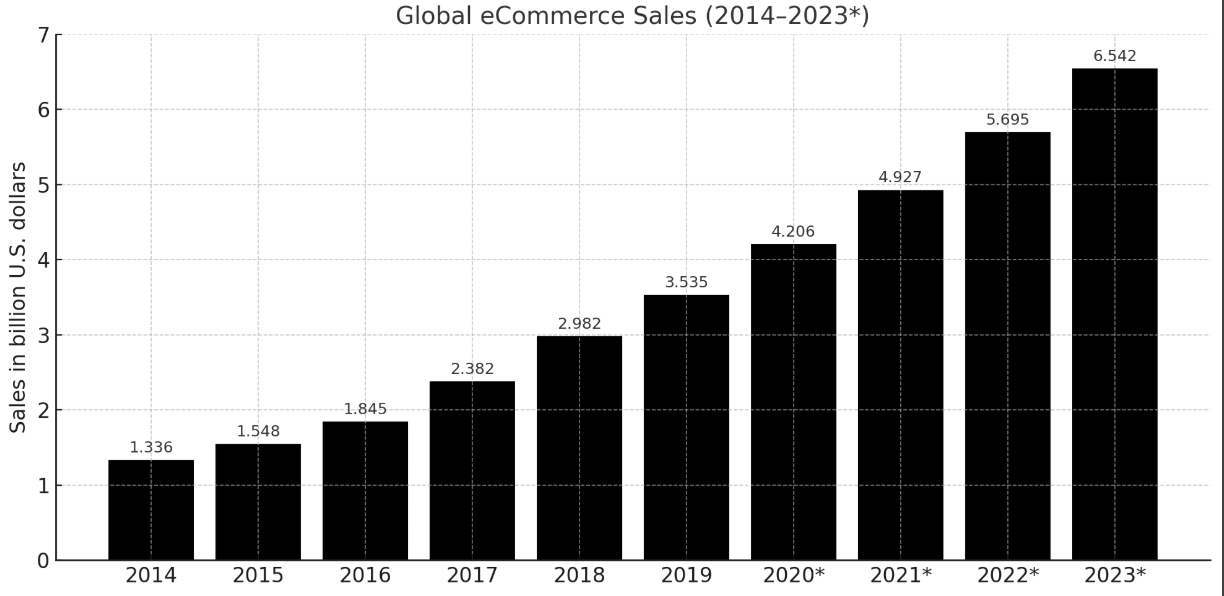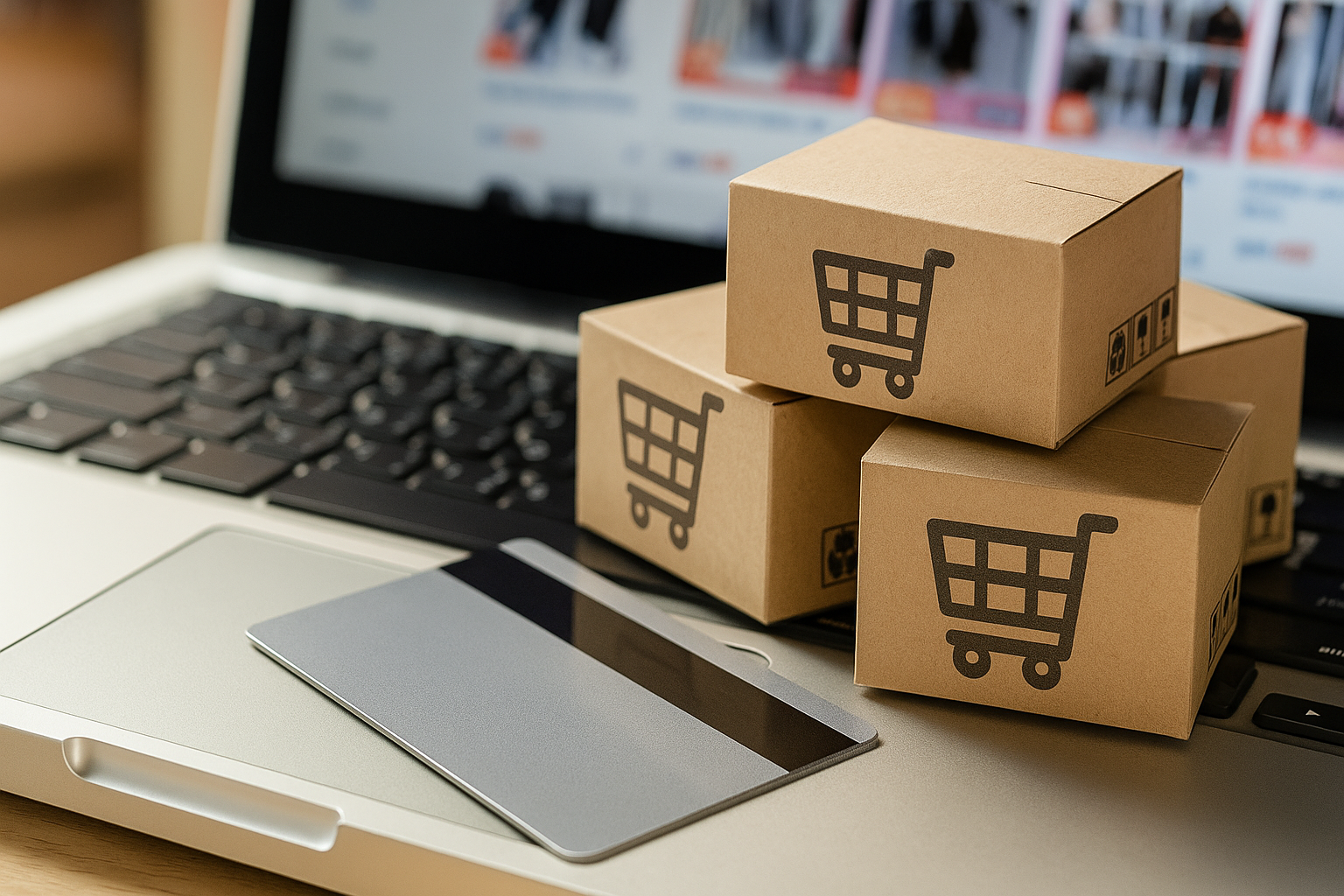The Glance into the History of eCommerce
The idea of eCommerce has existed since the beginning of the internet. It did not take long after its invention for entrepreneurs to figure out how to monetize internet access - within five years of the launch of the world-wide-web, SSL encryption was developed, allowing for secure online transactions.
By the early 90s, the first market places were launched. The dot-com bubble proved that not all marketplaces were viable, but those that survived like Amazon and eBay grew rapidly. Their rises were fueled by improved broadband access and increasing credit-card adoption.
The launch of the smartphone transformed eCommerce once again. Not only did it improve access to online shops, but also ushered in new mobile applications offering new opportunities to shop online. Shopify allowed small businesses to operate their own online storefronts, while social media apps created their own B2C or C2C marketplaces like Facebook Marketplace or Instagram Shops. This led to eCommerce as a whole growing by 78% within the US during the 2000s.
Meanwhile, established marketplaces like Amazon or Alibaba built logistics empires, pushing the boundaries of eCommerce with next-day shipping rates at even lower prices. The Covid-19 pandemic forced many households to rely on online delivery more than ever, even for shopping traditionally done in stores, like groceries. Analysis has shown that the pandemic led to additional growth of 19% in 2020 eCommerce. These trends continued past the pandemic, creating the massive demand for eCommerce we have today.

2014-2023 Global retail e-commerce sales from ($bn). Source: Statista
Modern Delivery Problems for eCommerce
The Last Mile refers to the final step in the distribution process: getting the order from the distribution center to the customer’s doorstep. This step continues to be the most expensive aspect of delivery, as home delivery inherently adds inefficiencies in routing, tracking accuracy, and infrastructure scalability. To help offset these challenges, carriers and retailers are increasingly turning to PUDO networks and smart parcel lockers. By the end of 2023, Europe had 155,000 parcel lockers, a 29% jump in a single year. These solutions consolidate deliveries and reduce failed delivery attempts, while giving shoppers convenient pick-up and return options on their own schedules. In traditional retail logistics, the goods move in bulk from the distributor to the retailer, where they are then picked up by the end consumer. In the eCommerce model, millions of packages must be delivered within hours to individual locations, often across borders that add further complexity with customs and compliance requirements.
In order to attract more customers, marketplaces have competed on price and convenience. They have incurred even more costs in last-mile delivery and squeezed their margins even tighter as they attempt to offer lower costs and faster delivery speeds. Marketplaces are quick to adapt to what their competitors are doing as well. Offerings that were once seen as exclusive, such as one-day shipping, have now become expected by consumers.
Retailers who operate their own eCommerce platforms will continue to find it difficult to compete with marketplaces like Amazon, who excel at logistics and have the scale to negotiate the most competitive carrier rates. These marketplaces will continue to offer improved delivery options that retailers cannot afford without taking a serious hit to their bottom line.

The Influence of AI For Final Mile Delivery
AI has the potential to lower costs across the board with a variety of applications in the last-mile space. Predictive demand forecasting from companies like C3 AI helps predict when products will be ordered and by whom, allowing for order and inventory optimization. AI can also help improve delivery routes, lowering costs and speeding up times, like Bettermile.
More importantly, AI can be used to enhance the delivery networks of retailers, allowing them to compete with the logistics powerhouses like Amazon and Alibaba without sacrificing profitability. 3PLs are able to connect with multiple carriers at once, using AI to select the optimal delivery options for consumers. Enhancing carrier networks with AI allows 3PLs to offer more delivery options to their customers while also gaining preferential rates.
AI is also enhancing parcel tracking for companies, improving the customer experience during the delivery and returns processes. AI is further being integrated into PUDO and locker networks, optimizing placement, availability, and utilization to balance delivery density with shopper convenience. This combination allows marketplaces such as Vinted to scale sustainably while helping carriers minimize delivery costs and improve network efficiency.
In addition, GPT’s new capability to initiate and accept payments within LLM environments will further transform the shopper experience, creating seamless, end-to-end purchasing and fulfillment flows. What is really exciting about AI is its ability to streamline carrier networks and process high volumes of operational data to identify and correct scaling inefficiencies, automate repetitive tasks, and bring clarity to complex carrier surcharges and overcharging - issues that can be half of forecasted costs for shippers.
When implemented correctly, AI can change last-mile delivery from a pain point to a competitive edge. AI will continue to democratize the space, as it helps retailers compete with much larger marketplaces. However, as with most developments in the delivery space, AI will not be a differentiator for long. Consumers will eventually expect the enhanced delivery experience that AI provides, meaning companies who are slow to adapt will fail to compete.
Thank you for reading, I’m Torbjorn Maaherra, founder of Synkka AI, a platform to build and streamline how you build, scale and manage your delivery networks. Please feel free to reach out if you’re discussing AI applications for the final mile.


.jpg)

